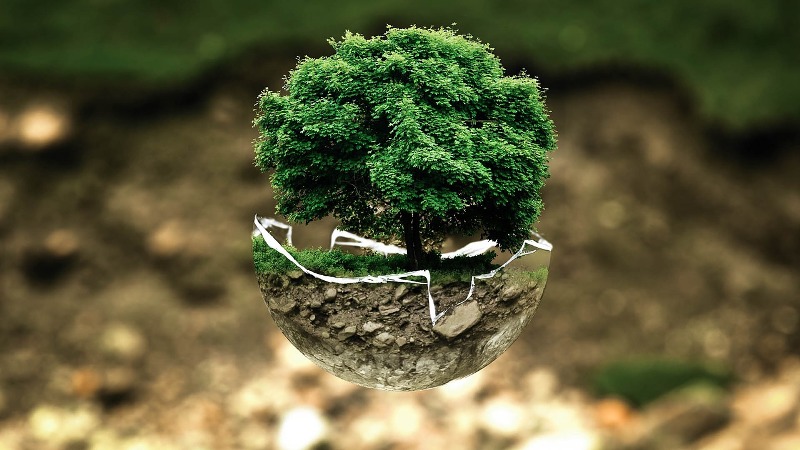Introduction
In recent years, there has been a growing awareness of the importance of preserving our environment and protecting our planet for future generations. One of the key elements in this endeavor is the conservation of trees. Trees are not just a source of natural beauty; they are essential for the sustenance of life on Earth. In this comprehensive guide, we will delve deep into the importance of trees, the threats they face, and how we can collectively work towards saving these vital organisms.
The Significance of Trees
1. Oxygen Production
Trees play a fundamental role in maintaining the delicate balance of our ecosystem. Through the process of photosynthesis, trees absorb carbon dioxide and release oxygen, making the air we breathe clean and breathable. In fact, a single mature tree can produce enough oxygen to support two human beings for a year.
2. Carbon Sequestration
In addition to producing oxygen, trees act as carbon sinks, absorbing harmful greenhouse gases such as carbon dioxide. This natural carbon sequestration helps mitigate climate change by reducing the amount of carbon dioxide in the atmosphere, thereby stabilizing global temperatures.
3. Biodiversity Support
Forests are incredibly diverse ecosystems that provide habitat and sustenance for a wide variety of flora and fauna. Trees, in particular, are essential for the survival of countless species, from birds and insects to larger mammals. By preserving trees, we protect these delicate ecosystems and promote biodiversity.
The Threats toTrees
1. Deforestation
One of the gravest threats to trees is deforestation. This process involves the large-scale clearing of forests for various purposes, including agriculture, urbanization, and logging. As a result, millions of acres of forest are lost each year, leading to the destruction of vital ecosystems and loss of biodiversity.
2. Climate Change
Climate change, driven by human activities, poses a significant threat to trees. Rising temperatures, increased droughts, and more frequent wildfires all have detrimental effects on forests. Trees are left vulnerable to diseases and pests, leading to massive die-offs in some areas.
3. Urbanization
The rapid expansion of urban areas often comes at the expense of trees. As cities grow, trees are often cut down to make way for buildings and infrastructure. This urbanization not only reduces the number of trees but also leads to increased pollution and reduced air quality.
Strategies to Save Trees
1. Reforestation
One of the most effective ways to combat deforestation is through reforestation efforts. This involves planting trees in areas where they have been cut down. Organizations and individuals can contribute to reforestation projects, helping to restore vital forest ecosystems.
2. Sustainable Logging Practices
For those areas where logging is a necessary industry, promoting sustainable logging practices is crucial. This means harvesting trees responsibly, ensuring that new trees are planted to replace those that have been cut down.
3. Reduce, Reuse, Recycle
Reducing our consumption of paper products and opting for recycling can significantly reduce the demand for cutting down trees for paper production. By reusing items and choosing recycled products, we can minimize the impact on our forests.
4. Raise Awareness
Education is a powerful tool in the fight to save trees. By raising awareness about the importance of trees and the threats they face, we can inspire more people to take action and support conservation efforts.
10 lines on save trees
1. Trees are the lungs of our planet, producing oxygen and purifying the air we breathe.
2. They provide habitat and sustenance for countless species of animals and insects.
3. Trees play a vital role in combating climate change by absorbing carbon dioxide.
4. Deforestation, driven by human activities, threatens our ecosystems and biodiversity.
5. Reforestation efforts are essential to restore the balance of our forests.
6. Trees offer shade, reducing energy consumption and cooling our cities.
7. They prevent soil erosion and maintain the fertility of the land.
8. Trees are a source of natural beauty, enhancing our landscapes and well-being.
9. Their wood is used for various purposes, from construction to paper production.
10. Saving trees is not just an environmental duty but a responsibility to ensure a sustainable future for generations to come.
Conclusion
In conclusion, trees are the unsung heroes of our planet. They provide us with oxygen, combat climate change, and support a diverse range of species. However, they are under threat from deforestation, climate change, and urbanization. It is our collective responsibility to take action and save these invaluable natural resources.
By supporting reforestation, promoting sustainable practices, reducing our consumption, and raising awareness, we can make a significant difference in the battle to save trees. Together, we can ensure that future generations inherit a world where trees continue to thrive, providing us with clean air, a stable climate, and a vibrant natural world.

